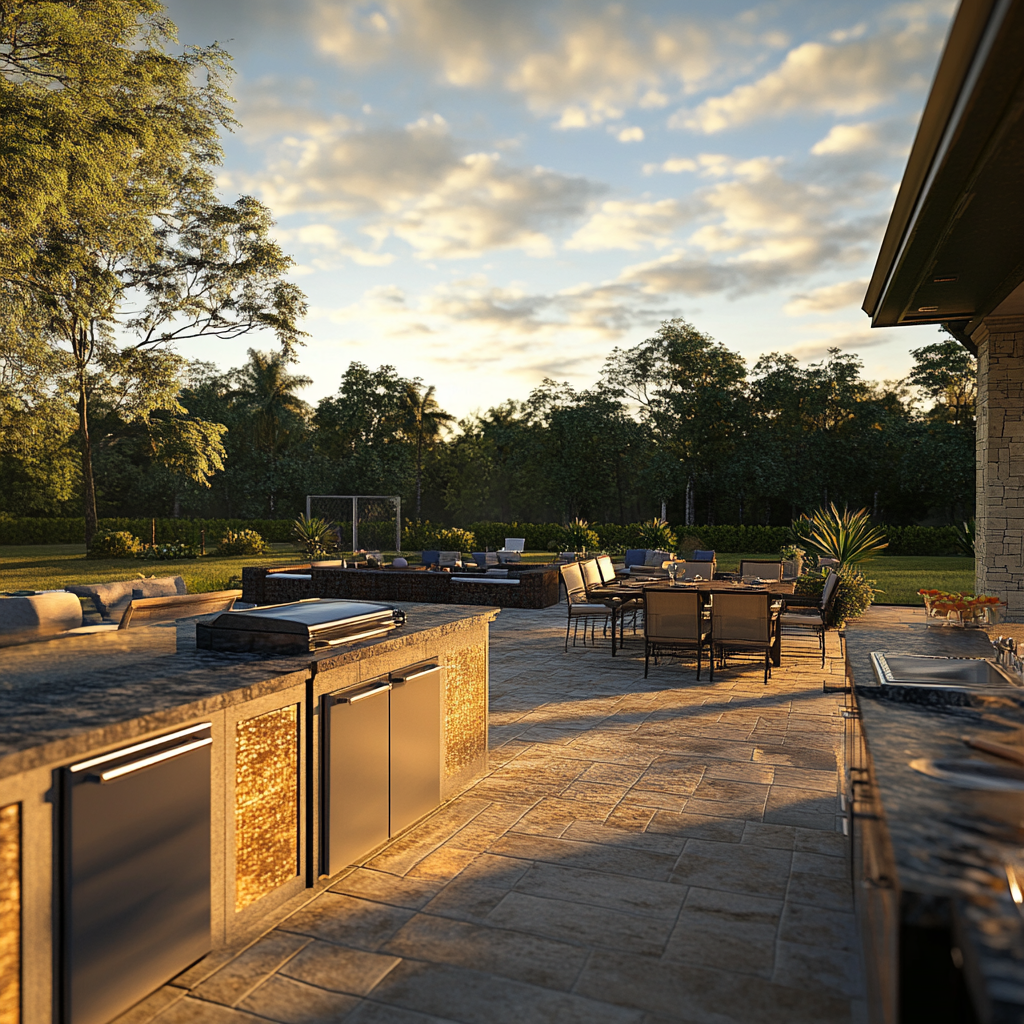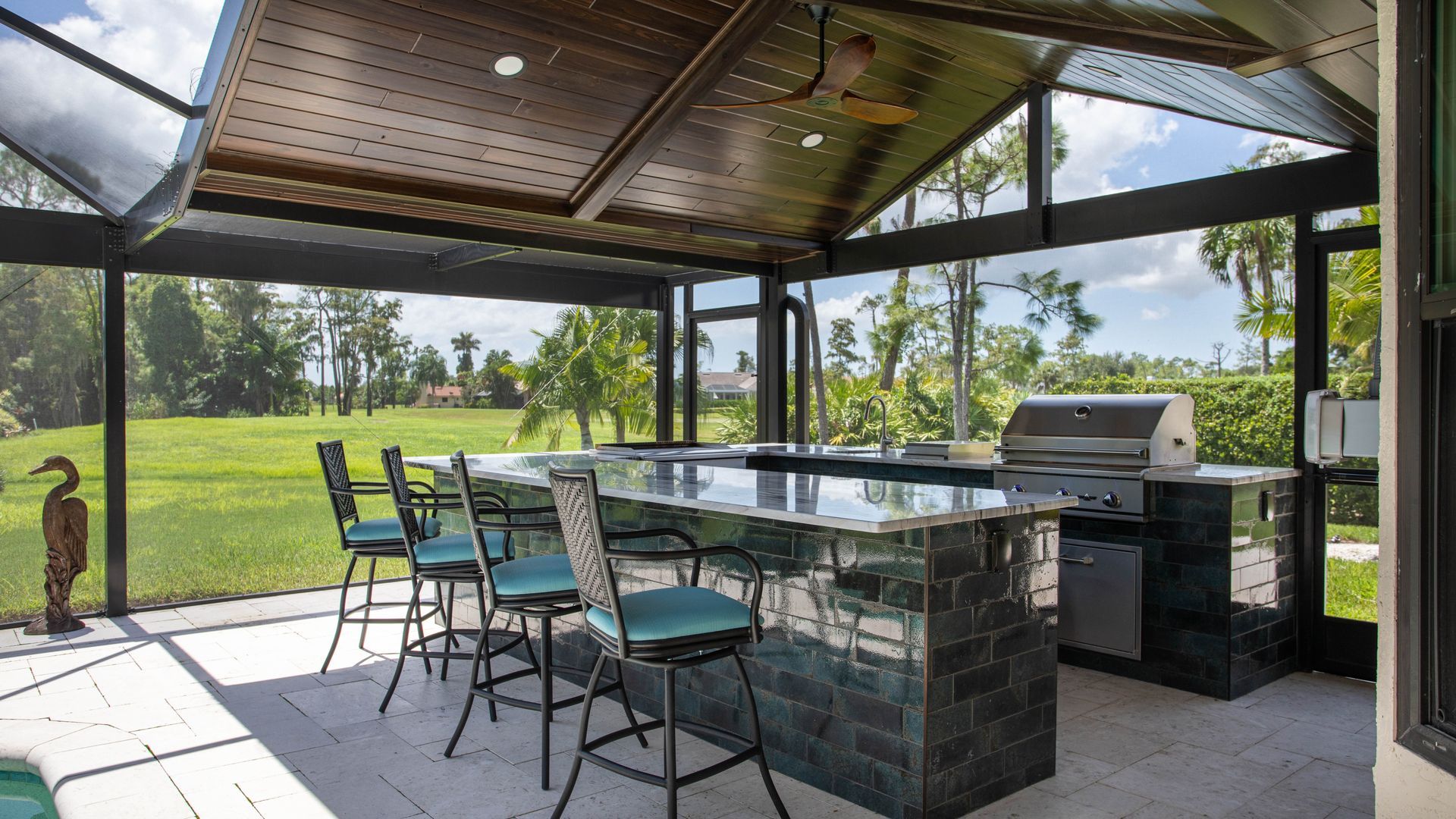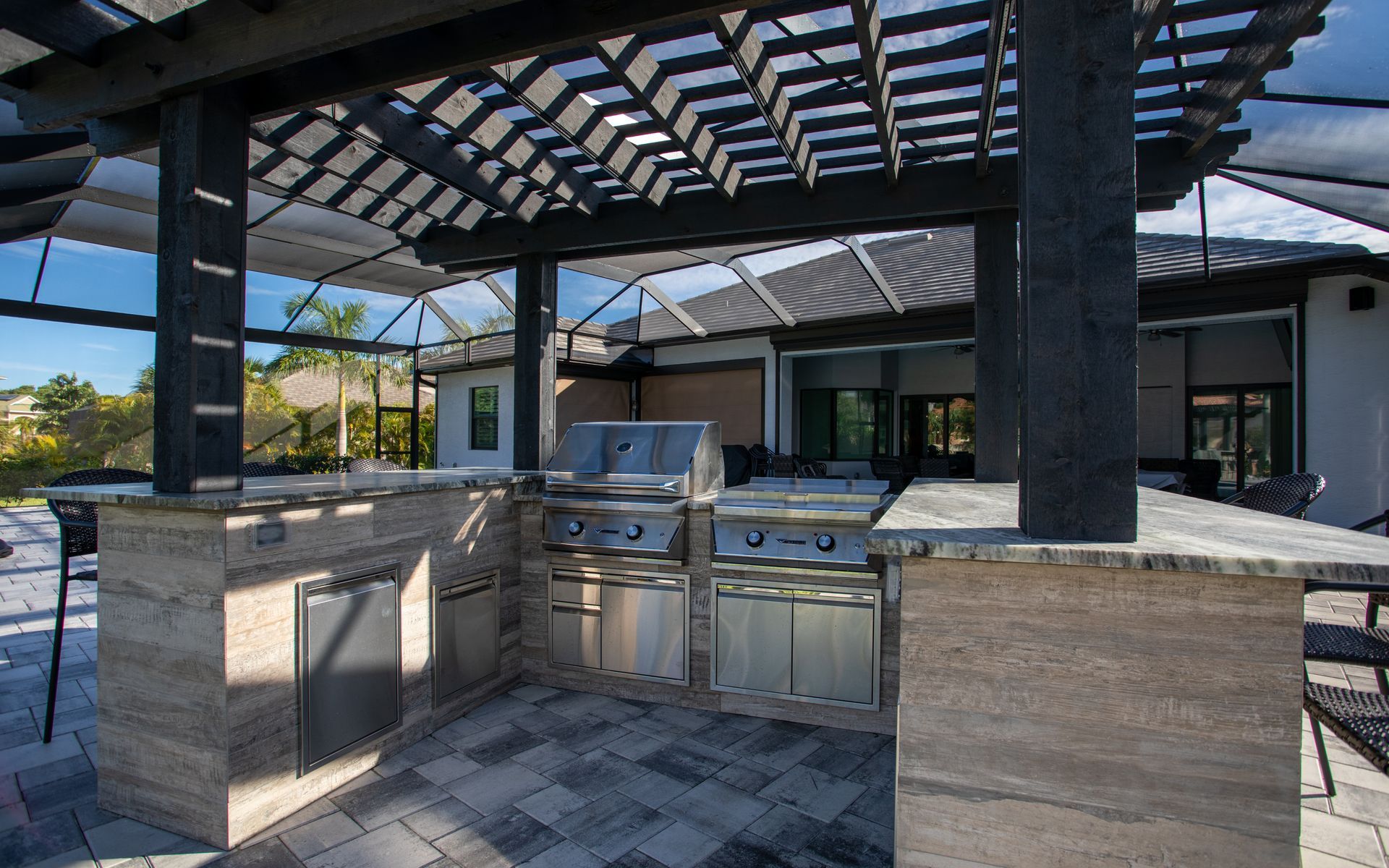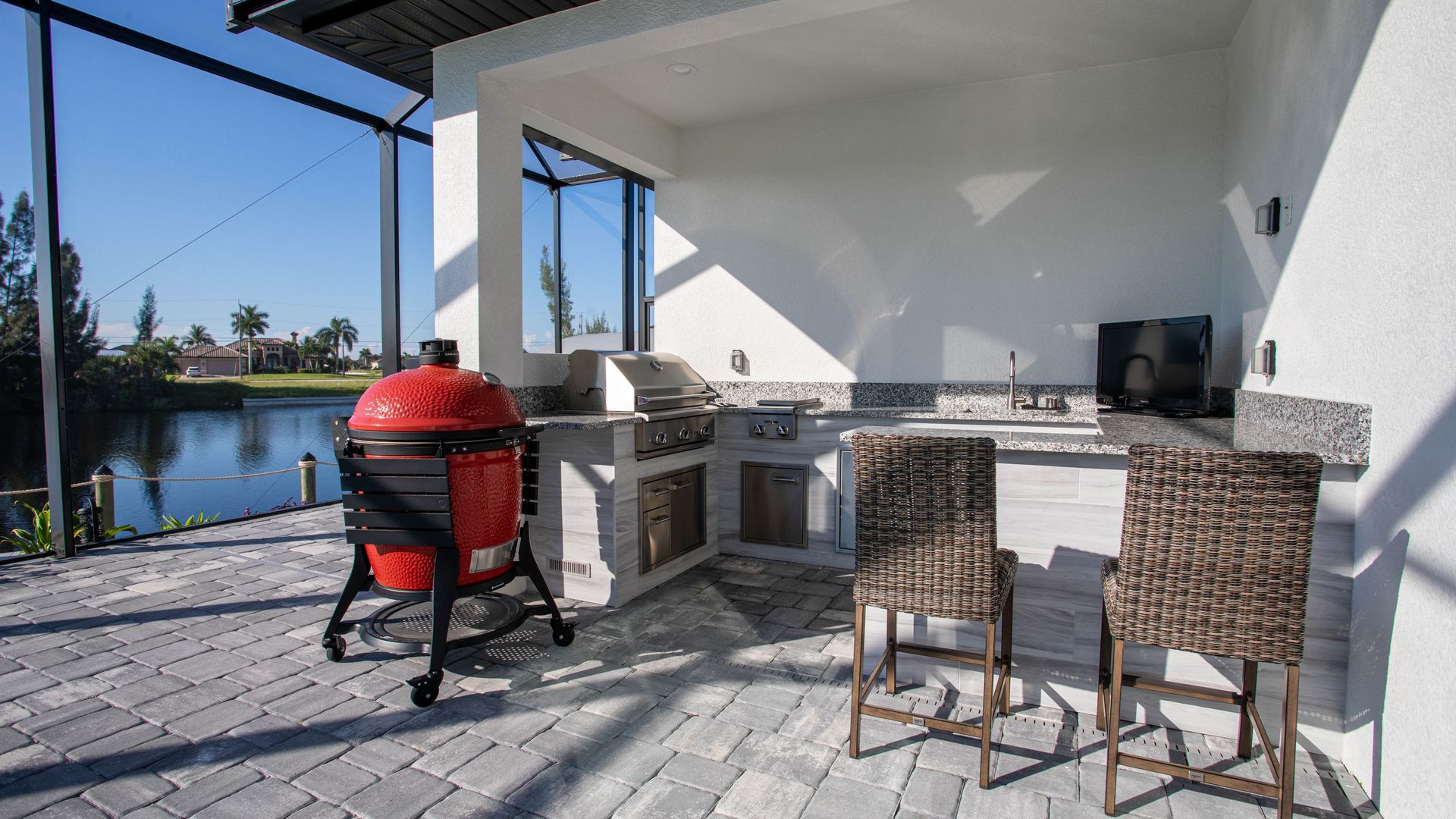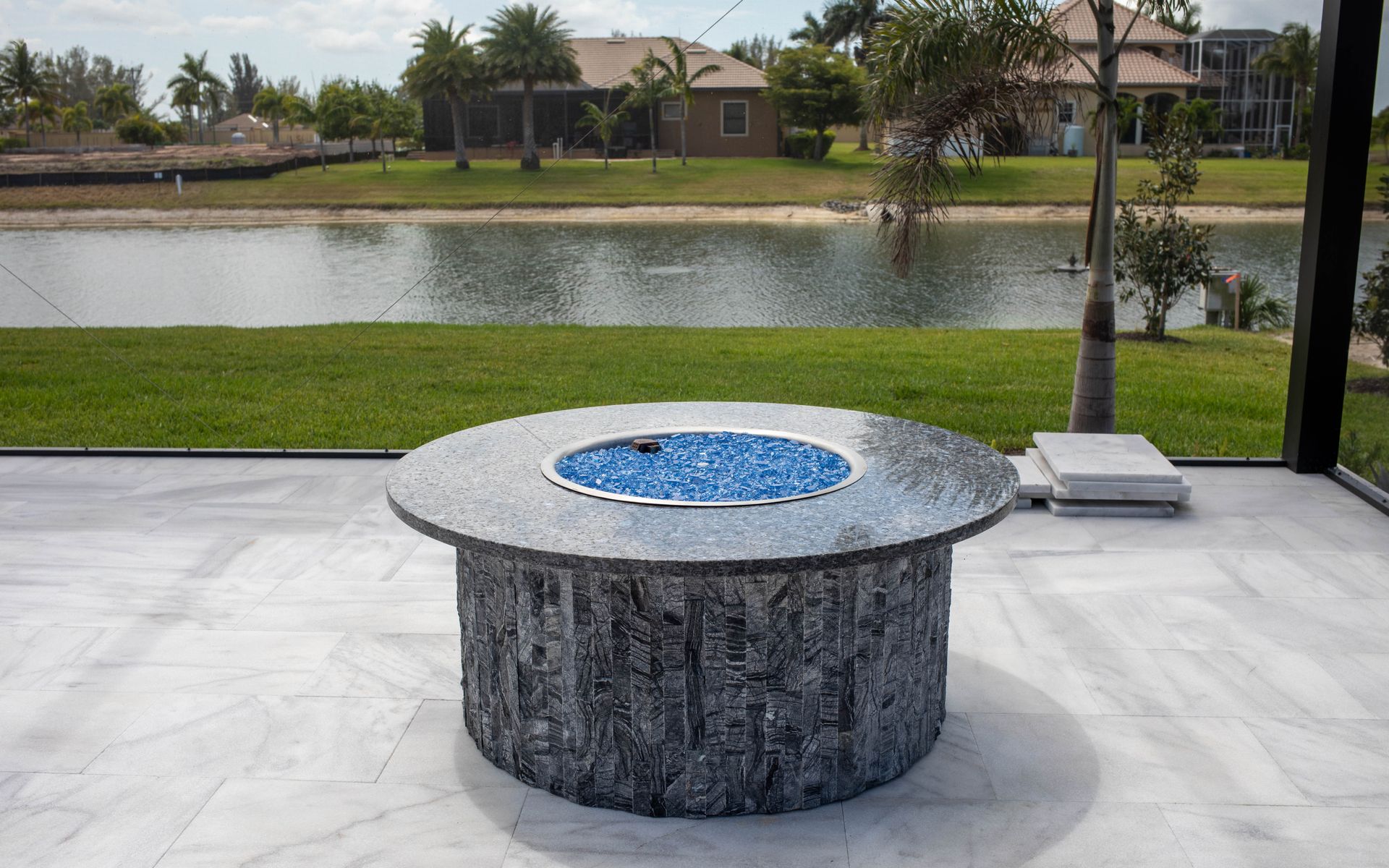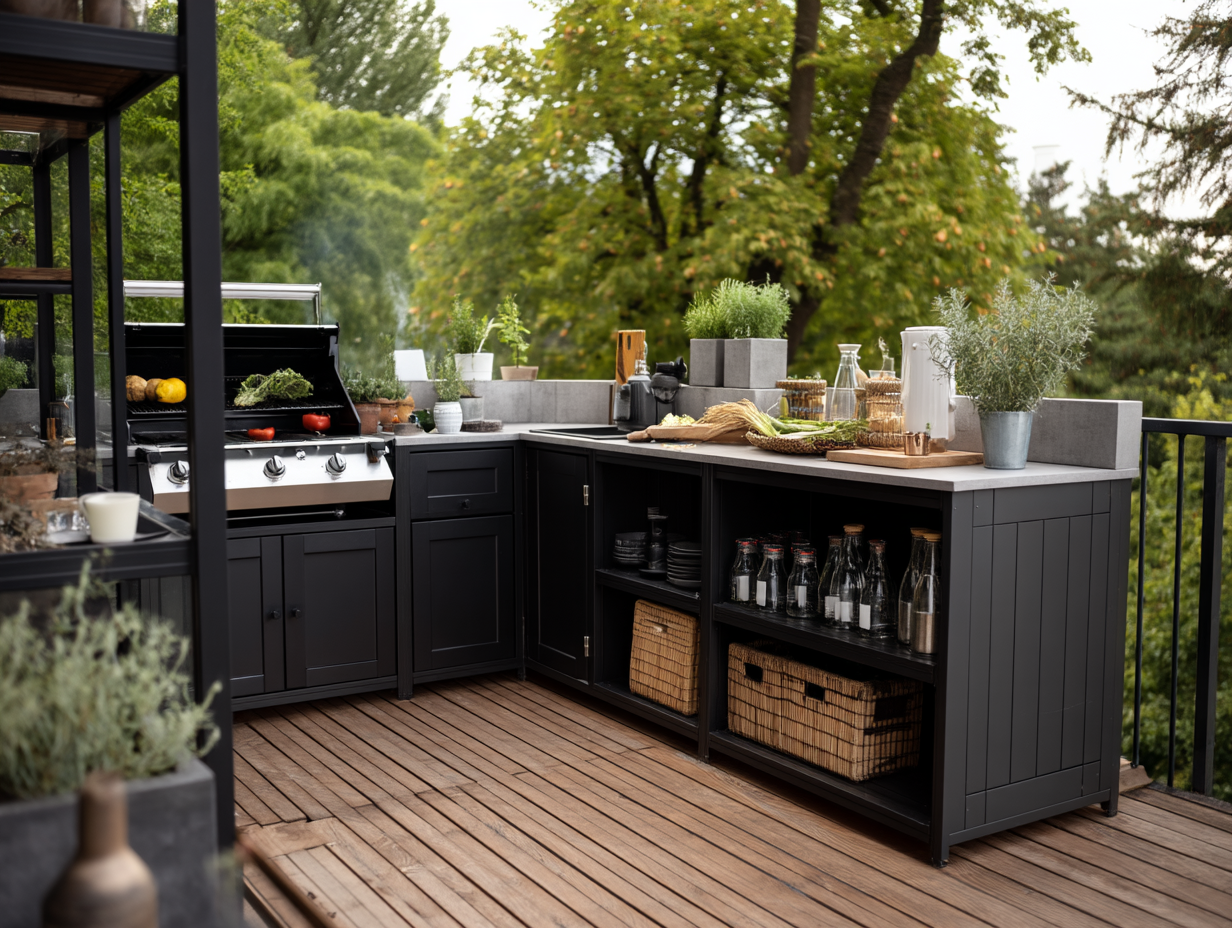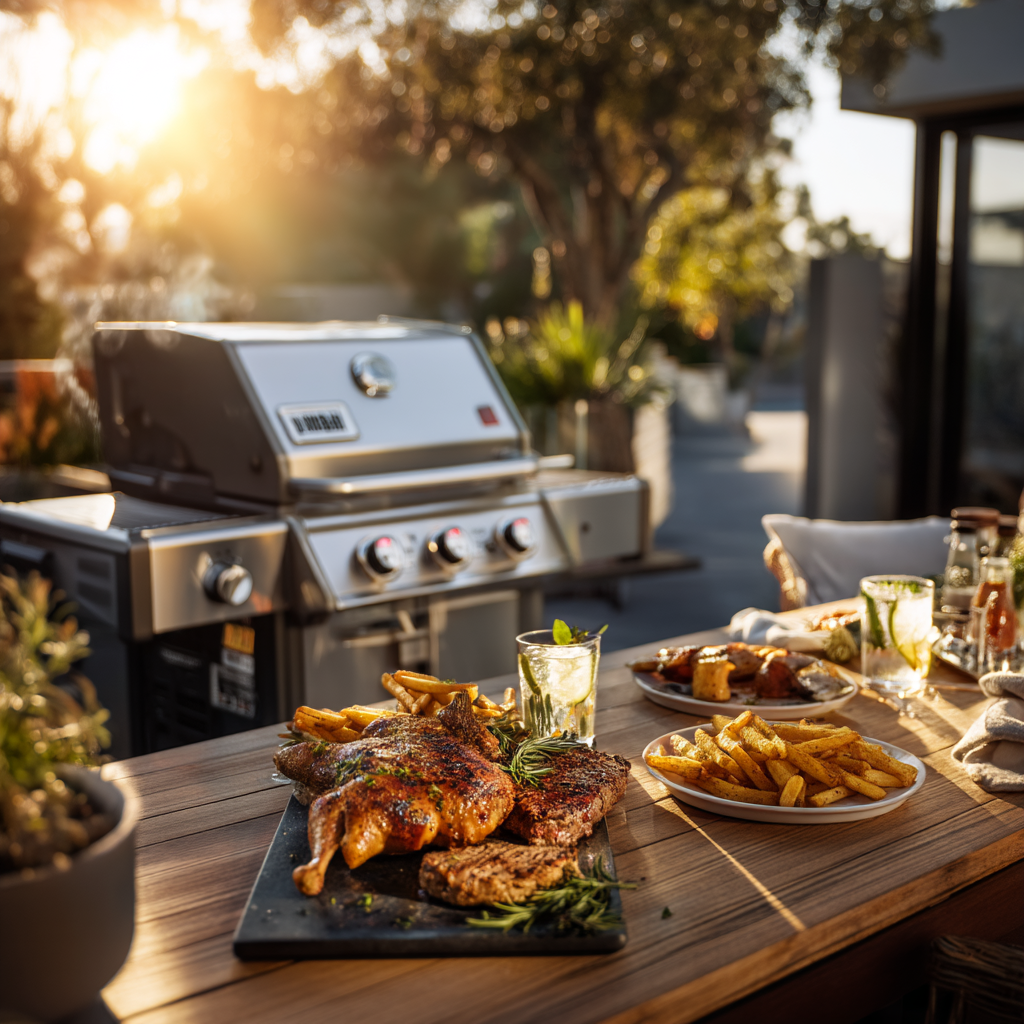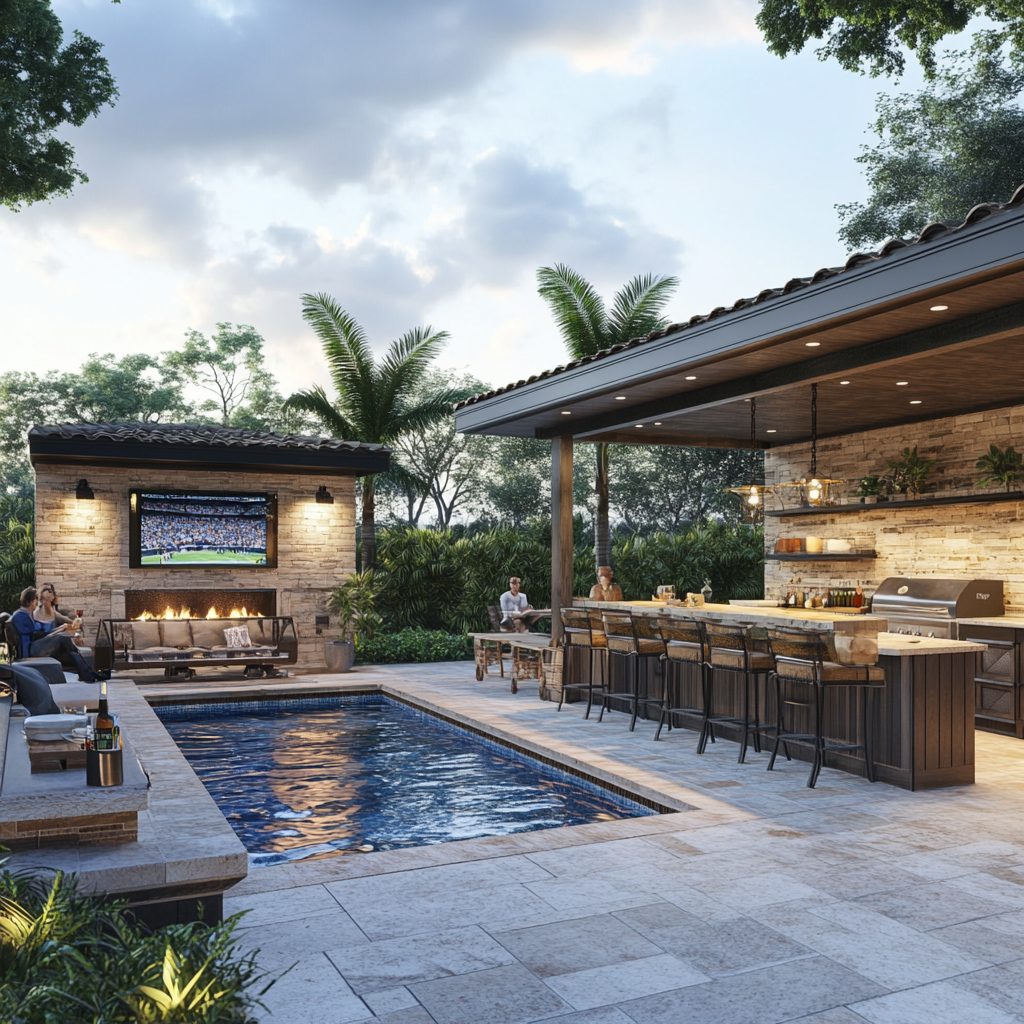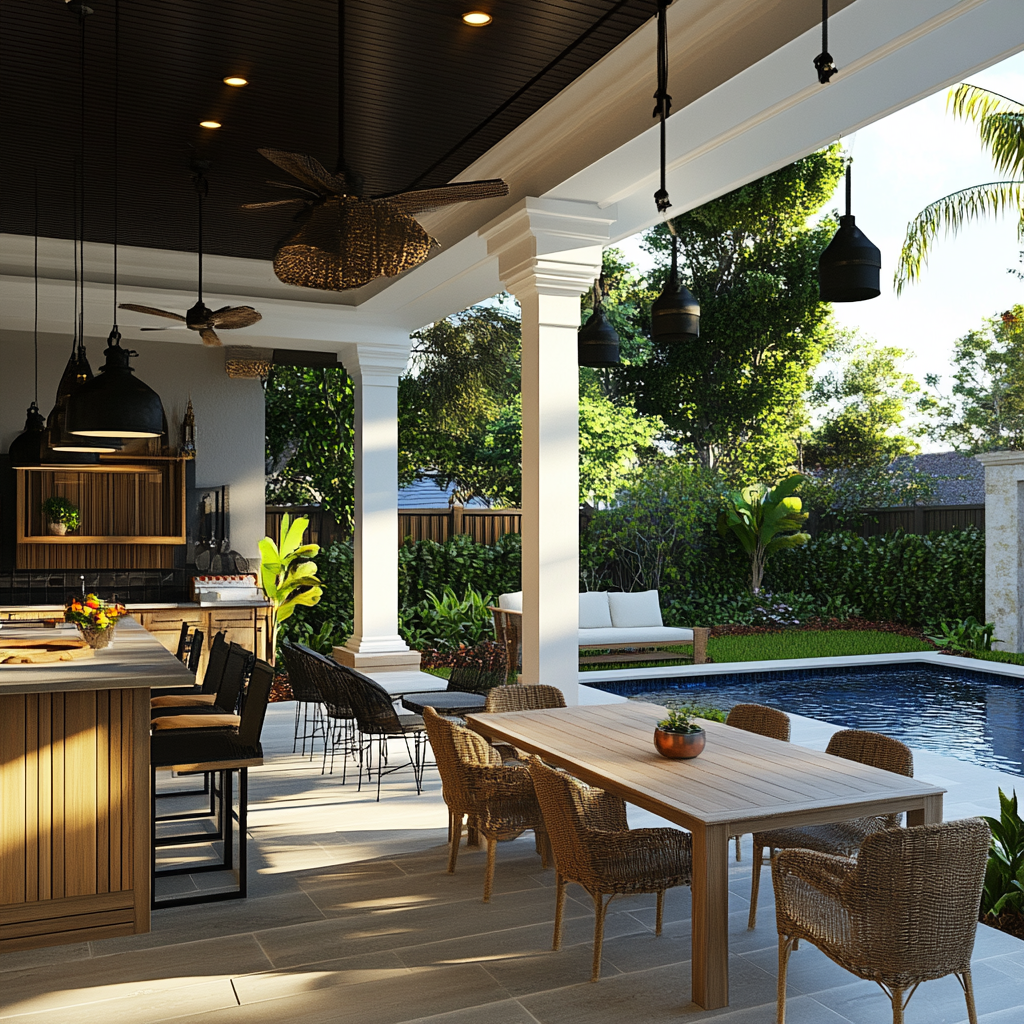The Big Green Egg Outdoor Kitchen
Henry Posey
You know you want to be a backyard hangout HERO!
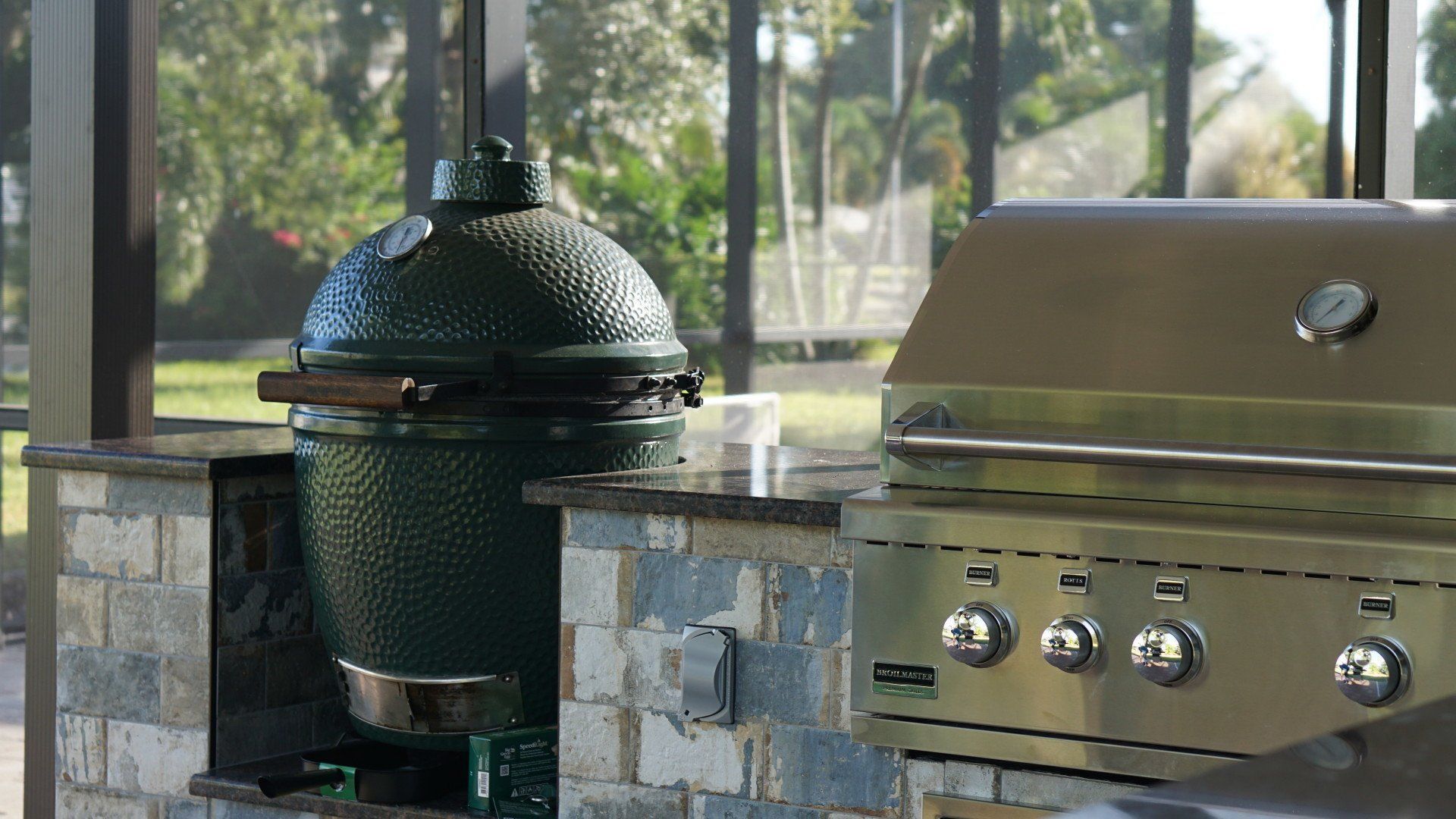
Our human brains are programmed to weigh everything we do against two things, surviving and thriving. As Americans, our brains don't worry much about survival freeing up the energy calories to concentrate on thriving. You not only want, but you need to be a memory maker and relationship builder to thrive. Creating the perfect backyard hangout with a Big Green Egg outdoor kitchen and becoming a backyard culinary expert will make it happen.
You have ideas, and you've probably done some reading and research on what you want. But, there are too many decisions leaving you not knowing what to do or how to do it or worried that you might get ripped off, or it just won't be right. You don't know if the Big Green Egg is right for you, but you're intrigued.
History of Big Green Egg
Kamado grills originated in China about 3,000 years ago and were adopted in Japan about 1,700 years ago as rice cookers. During WWII, soldiers stationed in Japan stumbled onto these kamado-style cookers, and several of them returned to the states with them. Lieutenant Ed Fisher was one of those guys. For several years he imported them from Japan. Over time, Fisher redesigned them using modern technology and established a manufacturing plant in Mexico, and in 1974, he put the Big Green Egg on the USA market. The beginning of a cult was born. Now, It is by far the most popular kamado-style cooker in the world.
Big Green Egg will make your life better.
You don't want to have survival issues, do you? According to Madeline R. Vann, MPH, human beings need a minimum of 1,200 calories per day to stay healthy. If you're like me, I want those to be the best tasting calories possible. "The Ultimate Cooking Experience" needs to step into your life and make it happen. Without the Big Green Egg, you will not be able to grill, roast, smoke, bake, and sear all with one appliance. What does that mean? Competition style 3-2-1 ribs slow-cooked at 225 degrees for six hours with flavor and texture that can't be matched by anyone in town. Roasted turkey like you've never had, real home-made pizza and perfectly seared ribeye steak could be in your future. Don't forget the Sunday morning cinnamon rolls. How can you survive without it? Everything you cook, you will now consider cooking it on your Egg.
Big Green Egg completes your outdoor kitchen.
You want your outdoor kitchen so bad that you need it, and you should never have regrets when creating an outdoor kitchen. Think through all the possibilities and make sure you are covering all the bases. Cooking is going to be the primary function of your outdoor kitchen, so consider what and how you're going to cook upfront.
The perfect outdoor kitchen will have, at minimum, a good quality gas BBQ grill. The gas BBQ grill covers the basics. True BBQ style burgers, steaks, chicken, some veggies, and even roasting a turkey or chicken will be quick and convenient. Even if you have a Big Green Egg, the gas grill is still going to get used half the time. It's more convenient because it heats up quicker on Wednesday nights.
The ideal outdoor kitchen will have a side burner, either a single or double burner will do. Excellent quality side burners are not what you've experienced in the past. The Weber's and Char Broil's of the world only run about 8,000 BTU, and you're lucky to get a quart of water to boil before dinner is ready. The ones I'm talking about are 15,000 BTU plus and are not scared of anything.
Now, the "perfect outdoor kitchen" will have a Big Green Egg. If you have an extra fifteen minutes for start-up, the gas grill you bought will get less use, but it does double as a nice warmer. The built-in Big Green Egg makes everything taste better. Cooking over natural lump charcoal adds flavor, and everything is juicier. Plus, as I mentioned before, you're now adding ribs, pizza, cinnamon rolls, pulled pork, and brisket to the menu.
A Big Green Egg, a high-quality gas BBQ grill, and a side burner, will be the perfect amount of heat for your outdoor kitchen.
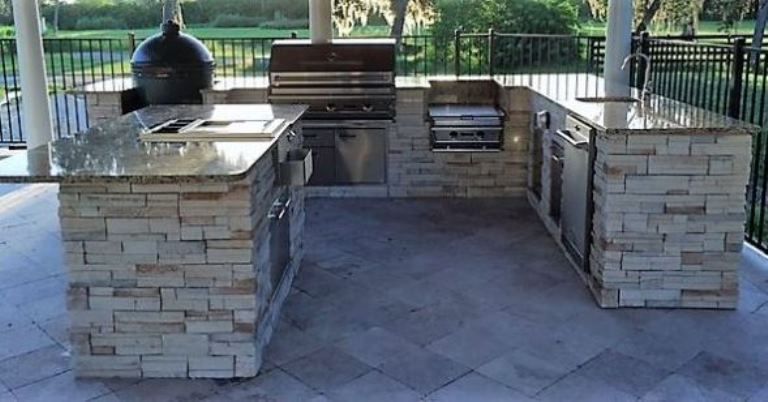
Creating a built-in Big Green Egg outdoor kitchen has to be done right.
There are a ton of things to consider when designing your outdoor kitchen. Let's narrow the list to what's most important.
Your space. How much do you have, and what are all the ways you want to use it? Other elements, such as outdoor refrigeration, trash drawers, bar seating, a sink, storage, and other patio furniture, to name a few, have to be considered. Remember, this is all about thriving! No Regrets! Dream and find out how much it will cost before determining your budget. If you've made it this far in this article, you're striving to be the memory maker and relationship builder, so let's do it.
Function: landing zones, work-space, and storage are your second biggest concern. Life's going to suck if you have to do without a built-in Big Green Egg, but you may not have space unless you expand. Most of everything we use to prepare and cook with is bigger when we work outside. At HL Posey, we strive to get a minimum of twelve inches between cooking elements, and sixteen inches is best. But, it's just as vital that you get what you want. Take a scroll through our picture gallery, and you will see what I mean. Think function before you think about the overall look of your outdoor kitchen.
Construction method: what is it built with, and how? At HL Posey, we use these four guiding principles:
- Will it withstand the antics of Larry next door? (you know who I'm talking about)
- Will it be safe enough for a three-year-old?
- Will it withstand what our Florida environment dishes out?
- What would I do at my house?
An outdoor kitchen is permanent, heavy, and only the appliances and fixtures designed for it will fit. Granite or stone countertops weigh about eighteen pounds per square foot; a built-in grill head weighs 120 to 275 pounds; a large Big Green Egg weighs 219 pounds. There are precise opening cutouts that we have to make for outdoor appliances and fixtures to fit perfectly. At HL Posey, we only use structural aluminum wrapped with a masonry substrate, Fibealumn, NatureKast, or John Michael stainless steel cabinetry.
You might be thinking that masonry block or concrete would be best because of the weight. Concrete block and concrete add substantial weight requiring additional concrete footers. Also, opening cutouts are seldom precise, and underneath storage gets limited due to the bulkiness of the actual materials.
What about wood to save costs? It's substantially cheaper, but it's combustible and rots. We rip out and replace wood-built outdoor kitchens all the time. You also lose storage underneath, and you have added expense to protect the wood from the fire. The only method left is steel studs. While less expensive than aluminum, it is flimsy, it will rust galvanized or not, and over time you will have this rusty metal smell lingering around.
Just keep in mind that it's reasonably easy to remodel your indoor kitchen and almost impossible to remodel your outdoor kitchen. There's a ton of fridges, cooktops, dishwashers, and ranges that will fit perfectly in the spot made in your indoor kitchen. Nothing will fit in your outdoor kitchen except the outdoor appliances designed for it.
Surface finishes: the choices are virtually limitless, stone, tile, stucco, or weatherproof cabinetry with all their variations. The most important considerations are maintenance and longevity. You're going to be slopping grease, oils, and sauces all over the place. Remember, it's outside in the Florida environment, and you are going to use this stuff.
Stucco is the most maintenance. The painted surface will easily stain and show wear requiring regular re-paints—especially where your toes are continually bumping into it. You're going to have enough stainless steel to take care of, so think twice about how often you will have to wipe down stainless steel cabinets. Another thing to keep in mind, stainless steel scratches reasonably easily. Less maintenance will be plastic polymer-based and NatureKast cabinets. They will scratch somewhat easily, and when exposed to direct sunlight, will warp and move around a bit. They will also need a good wipe down regularly to keep them looking clean and dust-free. Fibealumn is a bit more durable, resisting scratches and staining, but will need that regular wipe down. It is a welded aluminum frame with a fiberglass skin.
To eliminate virtually all maintenance, stone or porcelain tile is the way to go. They both hide and shed dust and grime and can be spot cleaned easily. Four or five years might go by before you bust out a water hose and a bucket of suds with a scrub brush to freshen them up.
Reminder, you have to live with your outdoor kitchen finish choices forever.
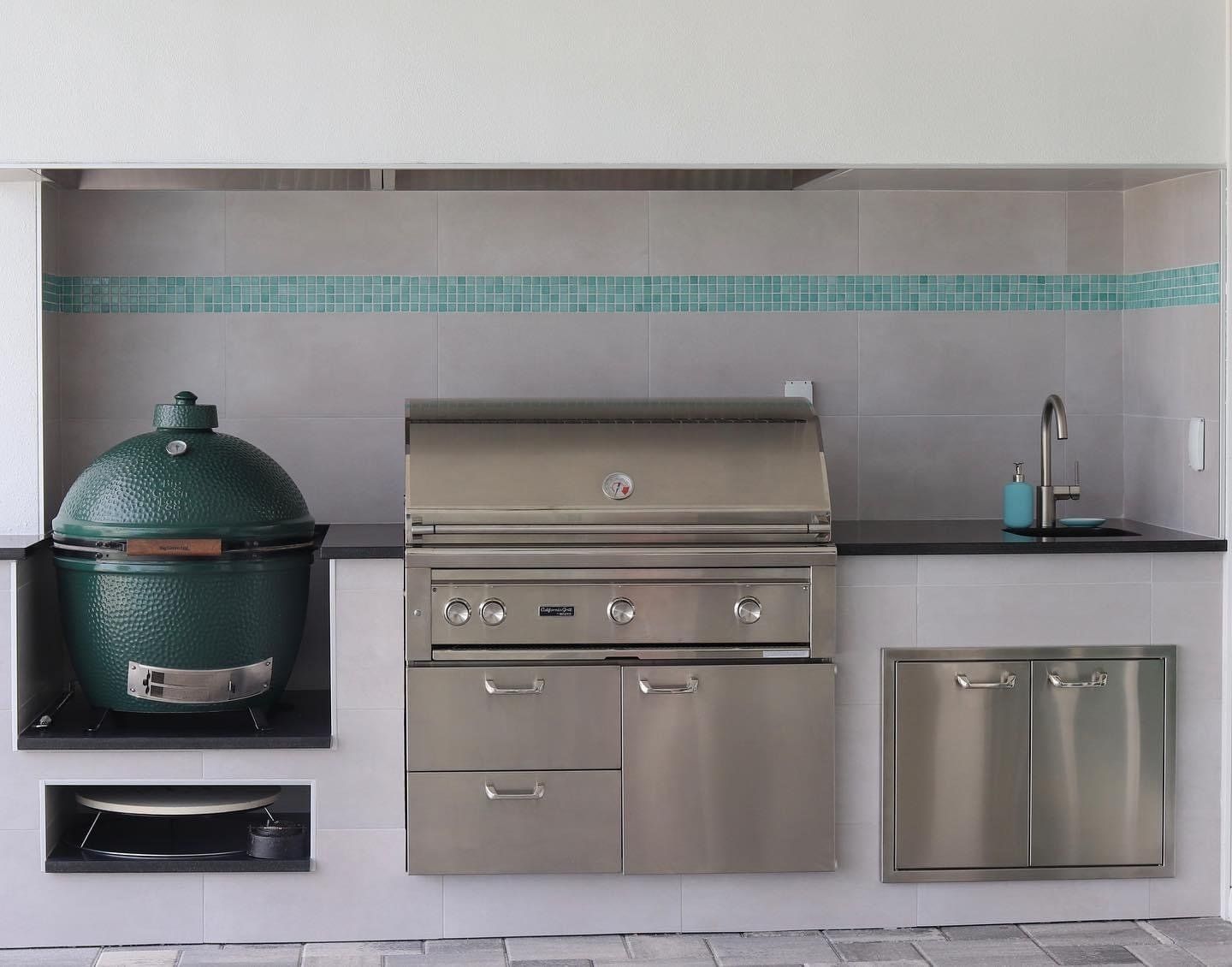
There's more to learn, and I'm sure you have lots of questions. HL Posey Builders is a Gold-certified Big Green Egg dealer. You can visit us at 1216 SE 9th Ter, Cape Coral, FL 33990, and we can fire one up and show you all the ins and outs of cooking great food on the Big Green Egg.
The outdoor experts at HL Posey Builders have taken the worry out and put the fun back in choosing the right materials, cabinets, and outdoor appliances for hundreds of people since 2007.
Call Now at 239.893.3700 or email Elena at elena.hlposey@gmail.com and get your perfect backyard hangout with a Big Green Egg outdoor kitchen.
